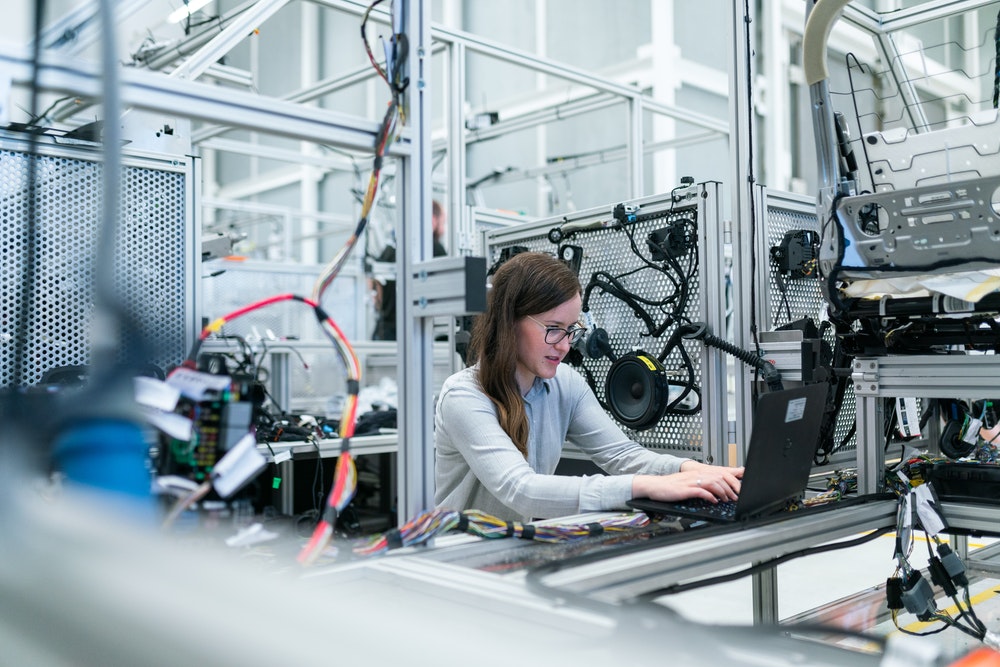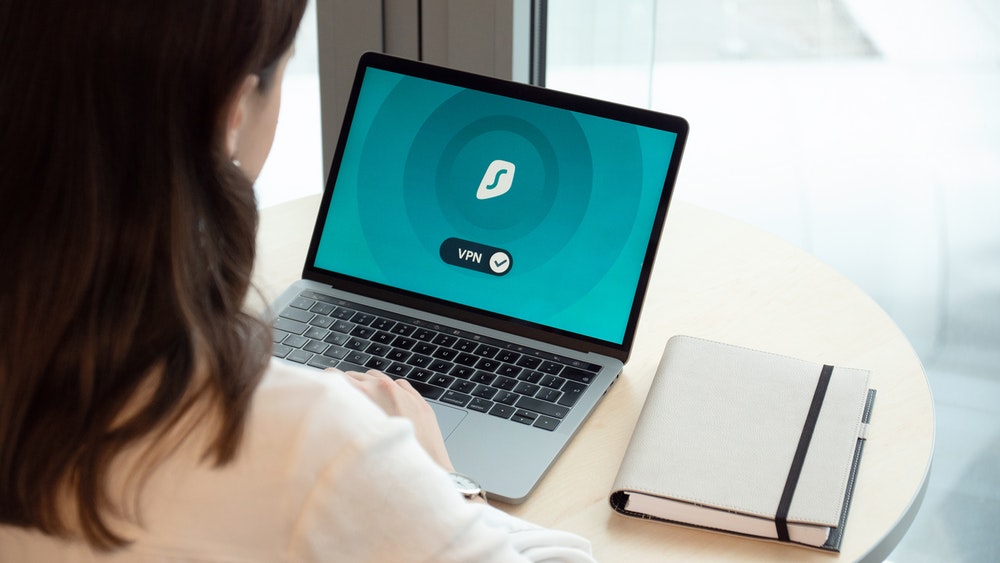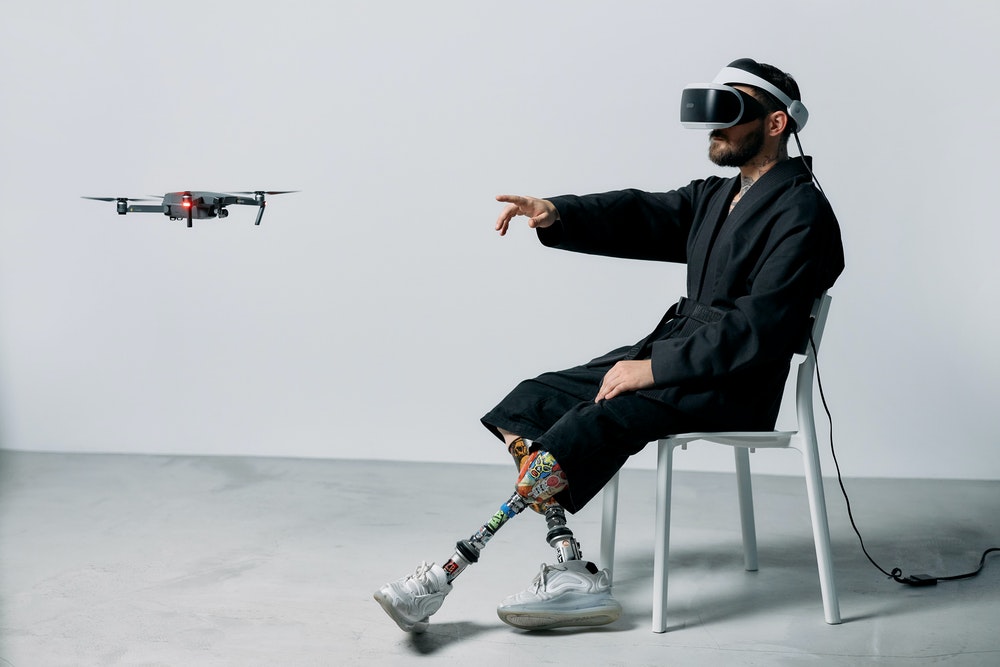Security Technology is a term that covers a lot of different things. Security tech can be either physical, like a firewall, or virtual, like antivirus programs. It’s about taking care of data, information, and physical assets. There are many types of security technology, such as machine learning, deep learning, advanced threat detection, and autonomous systems. These are just some of the many technologies that fall under security tech in its broadest sense.
Table of Contents
What is Machine Learning?
Machine learning refers to the ability of a computer system (a machine) to learn from data without explicit programming automatically. This can be seen in how security tools can identify threats or potential attackers by collecting data across networks through cameras or other devices such as firewalls. A machine learning algorithm can be trained to classify certain types of content or information, such as spam emails or pictures/videos containing nudity. It is an integral component in many security technologies because it allows systems to adapt automatically without manual intervention when new threats are encountered.
Machine learning is a subset of artificial intelligence. It refers to how computers can be “taught” with data to make decisions better without being explicitly programmed for what to do if x, y, or z happens. Deep learning is an advanced form of machine learning where machines can identify patterns in images, sound waves, and other data sources.
How do Security Tools use Machine Learning?

Photo by ThisIsEngineering from Pexels
Security software and hardware such as cameras or firewalls can collect data on potential attackers to better identify them later down the line, using deep learning to make sense of all that collected data. For example, Firewalls can detect a hacker trying to steal or delete data by monitoring the connections coming in and out of a network.
This information is then run through machine learning algorithms that can identify patterns within all this collected data, which can help predict potential threats before they even happen.
The same goes for cameras, with deep neural networks being used on video streams to identify and track objects. Deep learning is also used to identify events, such as a car running a red light or an object falling off of the side of someone’s desk.
What are some examples?
Some common security tools that use machine learning would be antivirus software (AV) and anti-malware, which scan files on a computer or in an email for threats while also looking at a user’s behavior to identify attacks.
AV and anti-malware scans can scan files on the spot without waiting to be opened, meaning they can detect malware even before the malicious code has a chance to do any damage. This is due to machine learning, with software that can identify patterns within data collected from millions of computers.
AV and anti-malware scans are also designed to be constantly updated as new threats evolve; This means that they need very little human intervention, which is a key part of machine learning in security tools.
Another example would be intrusion detection systems (IDS) which monitor the traffic coming into a network and use pattern recognition to identify potential threats or attackers.
What is Deep Learning?
Video by The Instagrapher from Pexels
Deep learning is a subset of machine learning where artificial neural networks are trained using large amounts of data such as text, images, and audio. Deep learning systems aim to allow computers to learn tasks by themselves without being explicitly programmed for them. This allows machines to make decisions independently with minimal human input. Deep learning technology was first developed in 1957, but it has recently seen rapid development due to improvements in computing power and data processing.
Deep learning is best known for accurately identifying objects in images, such as distinguishing between cats and dogs 97% of the time. The technology can be used across many industries, including healthcare, finance, or retail; however, it has also been heavily developed within the industry over the last few years due to a major push by some of the biggest names in AI.
What is Advanced Threat Detection?
Advanced threat detection refers to the ability of security tools such as IDSes, firewalls, and antivirus software to identify advanced attacks that are becoming more common due to technological improvements. It is a security technology that proactively identifies malicious content before it affects an organization’s assets by scanning incoming network traffic to identify potential threats and take action quickly. Advanced threat detection systems aim to identify these issues and respond with appropriate responses, such as blocking the offending host or blocking/filtering the offending content from being allowed to enter an organization’s network. Security vendors such as SentinelOne, Sophos, McAfee, and Kaspersky have all been developing new methods of identifying these threats, which include:
- Machine learning algorithms for scanning files to identify the most common risks or potential malware
- AI models can detect attacks based on user behavior patterns and, in some instances, predict what might happen next.
What is the Latest in Security Technology?

Photo by Kindel Media from Pexels
The most recent development in AI is called autonomous systems, which aims to solve problems that humans can’t. The idea behind this branch of machine learning is for machines or programs to think and act autonomously without human intervention, such as identifying patterns within data on millions of computers with little to no human intervention.
Autonomous systems are computer-controlled systems that can operate independently of human input or supervision by responding to events as they occur or based on set programming instructions. These autonomous systems have been integrated into many sectors, such as manufacturing plants, factories, and cars. Autonomous systems are more advanced versions of machine learning and deep learning, the best-known example being self-driving cars. The system can make decisions without human intervention based on a set of parameters or conditions that it has been programmed for.
Some examples of these autonomous systems include:
AI chatbots can create natural conversations with people through machine learning algorithms and can answer questions or solve problems autonomously. This is done by analyzing millions of previous chats, looking at speech patterns, and what words we use most often in conversations.
Robots can perform tasks without human intervention, such as delivering items from one location to another. This is done by using machine learning algorithms that can identify patterns and problems within data collected on millions of previous deliveries, for example, how many times an item has been sent out with no response.
My favorite security technology is machine learning-powered by deep neural networks, which can be used for everything from identifying potential threats before they happen to predicting what might happen next.
What are Some of the Different Types of Security Solutions?

Photo by Markus Spiske from Pexels
- Physical Security includes restricting access to sensitive spaces, locking and securing doors that lead into restricted areas, and using intrusion detection and video surveillance systems.
- Computer security involves safeguarding your system from unauthorized use by implementing complex passwords on the computer and having an acceptable usage policy.
- Password strength requirements ensure that passwords aren’t too easy to guess or crack.
What can you do if someone hacked your account?
- It would be best if you changed your passwords and closely monitored any new accounts on Facebook or other social media sites like LinkedIn. You may also want to contact your bank and monitor any activity.
- Request that the company investigating this type of hacking look for suspicious emails sent from your account to determine who hacked into it.
- You may also want to use a password management app like Last Pass or Keeper, which can help you securely generate and save passwords and share them with others.
Other Types of Security Solutions to use with Your Security Strategy

Photo by Dan Nelson from Pexels
- Webcam Security: One of the most common forms of security is webcam surveillance which allows people in different places to see what goes on. This means if there’s a robbery at your grocery store, then you’ll know about it in real time and can call the police.
- Data Security: Data security is one of the most important things to think about because if someone gets access to personal information, they could do all sorts of bad things with it. It’s impossible to keep this kind of data safe 100% of the time, but there are some steps you can take to make sure it’s as secure as possible.
- Mobile Security: This is also a big security issue because more and more people have found themselves using their phones for everything from banking information to passwords. That means that if your phone gets hacked, someone could seriously damage your life.
- Software Security: Software security is critical because it’s how companies and governments protect their data. There are many different types of software out there, but without a good system in place, your information could still get compromised even if you’re using encryption techniques!
- Data Privacy Rights: Data privacy rights can be confusing for many people, but it’s very simple. Data privacy rights are individuals’ basic human rights to their information and what they can do with it!
- Privacy Policies: Privacy policies protect your data from being used without permission, so every company should have one.
- Personal Identification Numbers (PIN) vs. Passwords: A PIN is a number that can be used to access your account, but it’s not as secure as a password because there are more combinations which means someone could find out what you’re using in less time.
- Cryptography: Cryptography encodes information so that only those who have permission will know how to decode it. This is very important for information that needs to be kept secret, but you have to ensure the system you’re using doesn’t allow anyone else to see what’s happening!
- Encryption: Encryption makes messages unreadable by interceptors which means if someone tries, they’ll end up with a bunch of random text. It’s important to make sure the types of encryptions you’re using are strong enough, or else it won’t be effective!
- Key Management: Key management refers to creating, storing, and distributing cryptographic keys, which are used with cryptography systems like AES.
- Authentication: Authentication allows people to confirm their identity during an online transaction. It’s important to make sure this system is highly secure and doesn’t allow outsiders access!
- Lockdown: Lockdown will block unauthorized users from accessing your information, which means if you’re not feeling well, then someone else can take care of it for you without the worry of them having access to sensitive data.
- Attack Surface Reduction: Attack surface reduction is a defensive strategy limiting the number of points an intruder can attack. This means it’s possible to make your system stronger with less effort!
- Proximity Sensors: Proximity sensors are intrusion detection systems that detect people close to something like a laptop, allowing you to know when someone nearby shouldn’t be there.
- Automatic Door Locks: Door locks can keep people out of a room or an area, which is why they’re often found in places like the front door, break rooms, and bathrooms!
- Authentication of Identity: Identity authentication ensures that whoever wants to use your computer knows exactly who they are before allowing access.
- Biometric Security: Biometrics refers to any security measure based on unique physical characteristics such as fingerprints, retinas, irises, voice patterns, etc. They’re usually combined with other forms of identification like passwords, usernames, email addresses, etc.
What Are Some Benefits of Security Solutions?

Photo by Anna Tarazevich from Pexels
Some key benefits of this technology include fewer false alarms, faster detection time, and reduced human intervention.
This is due to the advanced algorithms used in these security tools, which constantly update and learn from data collected on millions of computers or analyze a user’s behavior. This means that they can identify patterns within data quickly that would take humans hours, days, weeks, or even months to do – saving time for IT professionals who have more important things to do.
What Are Some Limitations of Security Technologies?

Photo by Aleksandar Pasaric from Pexels
The major limitation associated with using security technologies is how they can sometimes produce false positives or negatives, resulting in a missed opportunity for detection and protection from a real threat. This happens when an algorithm doesn’t have enough data about a type of attack, meaning it cannot identify the attack.
Some other limitations include: human intervention is still needed as machine learning will not be 100% accurate. Ethical concerns sometimes come with using AI, such as privacy issues or job losses for humans replaced by machines.
What Can I do to get More From My Security Solutions?

Photo by William Fortunato from Pexels
There are a few things that you can do to get the most out of your existing security technologies. These include: updating software, turning on antivirus protection, and installing an IDS (intrusion detection system.) These may seem like simple tasks, but they’re some of the best ways for UTM (unified threat management) tools to stay current and identify the latest threats.
If you’re looking to get more from your existing security technologies, then we can help. We are a leading cybersecurity company providing information assurance and managed IT services for businesses of all sizes across the globe. With our expertise in network monitoring, cyber-defense operations, and incident response management, we will ensure that your networks remain as secure as possible.
We help you assess your current vulnerabilities and identify ways to improve to reduce the risk of a breach. Our experts will review how well your current security systems are working, what needs attention, and how best to proceed with any necessary changes. We also offer cyber-defense operations services that include intrusion detection & prevention, advanced malware protection, and network monitoring.
Security Solutions Wrap Up
Network security is a never-ending battle, and that’s why all companies have to ensure they’re doing everything possible to stay safe from cyber attacks. This means investing in a wide range of the latest technologies for maximum protection! However, not every company has access to the same resources, which is why some rely on more traditional methods.
The difference between these two approaches is that newer technologies are usually more expensive, but they also can do a lot more. If you don’t want to spend money on something new, your options will be limited, and you’ll need to consider what’s most important for your company.
I hope you learned something new about the fundamental concepts of security technology! It’s not always easy to keep up with the latest trends, but they’re essential, and it doesn’t take much time or money to set them up. Your information is precious, so make sure you do your best to protect it in any way possible. If you need any assistance from our security industry professionals, whether it be video surveillance systems, security policies, a security strategy, cloud-based video monitoring, or anything else, please reach out by sending us a message. Be safe out there!



Trackbacks/Pingbacks